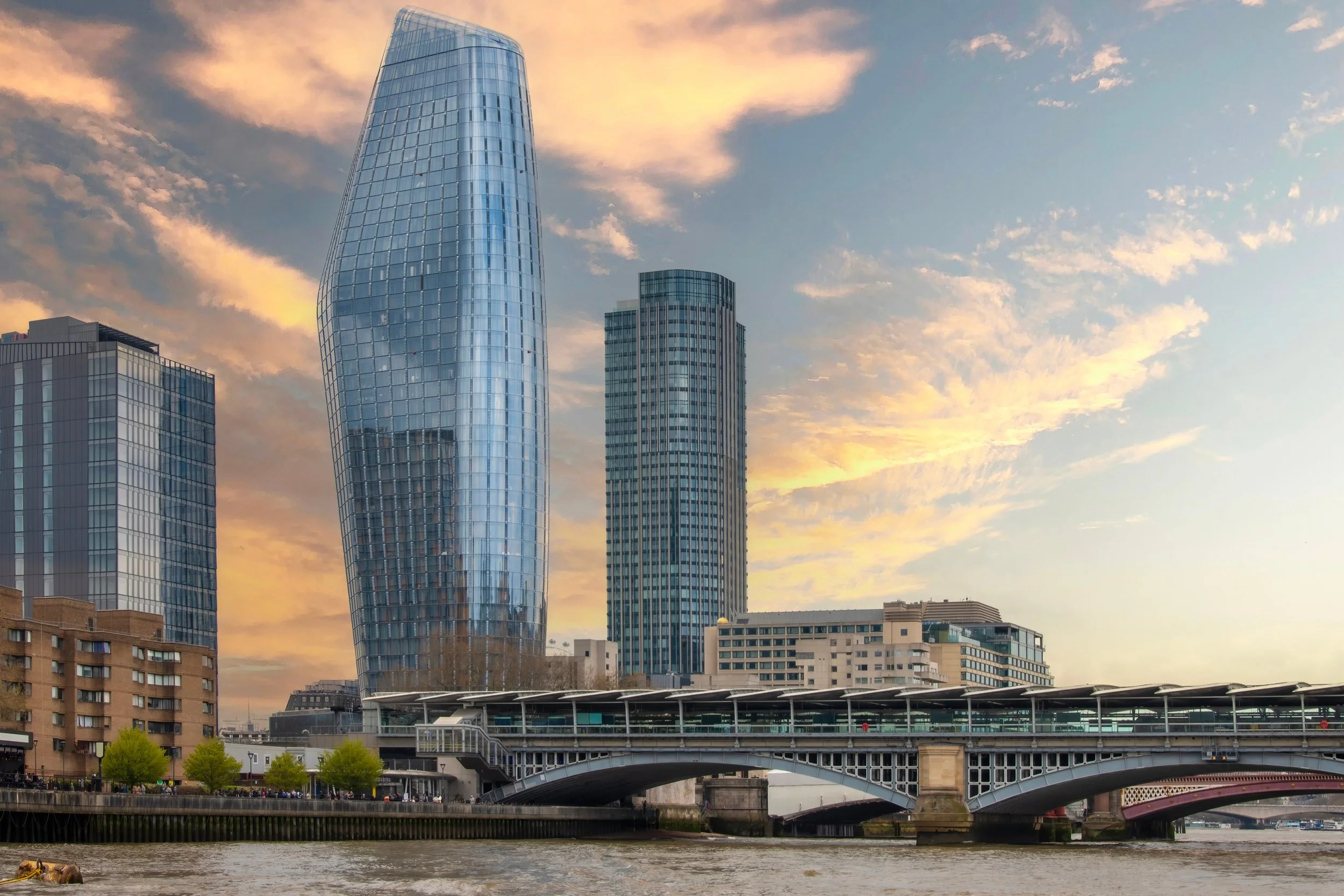Bazalgette Embankment: Where Victorian Vision Meets 21st-Century Engineering
Blackfriars Bridge over the River Thames, London, at sunset.
London’s riverfront is about to welcome a striking new chapter in its history. Next month, the Bazalgette Embankment, a 1.5-acre landscaped public space on the north bank of the Thames at Blackfriars will open to the public.
Bazalgette Embankment It is a rare combination of infrastructure, art, and green design, made possible by one of the most ambitious civil engineering projects in the capital’s modern history: the Thames Tideway Tunnel, this is not just another stretch of walkway,it is the physical, visible legacy of a £4.5 billion “super-sewer” that now flows unseen beneath the riverbed, reshaping both London’s environment and its urban experience.
A Legacy Reimagined
The embankment takes its name from Sir Joseph Bazalgette, the Victorian engineer who, in the 1860s, reclaimed miles of the Thames foreshore and built the original riverside sewer system after the notorious Great Stink of 1858. His pioneering embankments combined functionality with elegance, housing sewer tunnels and transport routes behind ornate stone walls and tree-lined promenades.
Today’s Bazalgette Embankment continues that tradition of multifunctional civic design: below, a feat of 21st-century engineering; above, a beautifully designed riverside park
Engineering Foundations: Building on Water
Creating this new space meant constructing land where once there was only water.
At the Blackfriars site, engineers built a massive cofferdam,a watertight enclosure made from interlocking steel sheet piles, to hold back the Thames during construction. This allowed the creation of a permanent reinforced concrete base slab up to 4 metres thick and an internal shaft diameter of 22 metres. The shaft’s secondary lining, 1 metre thick, ensures watertightness and longevity, while vortex drop shafts inside help regulate the incoming flow from the sewer system.
The Thames Tideway Tunnel itself is 25 km long, with a diameter of 7.2 metres, running up to 70 metres below ground in places. At peak storm conditions, it can store and transfer 39 million tonnes of sewage-laden water annually to treatment plants, preventing the discharge of raw sewage into the Thames, a problem that had plagued the city for centuries.
Landscape & Design: Turning Infrastructure into a Destination
While the engineering is buried deep, the embankment above is all about visibility, accessibility, and beauty. Designed by Hawkins\Brown with input from artists and ecologists, the space is rich in detail.
71 newly planted trees and over 3,000 shrubs and perennials, chosen for resilience to London’s riverside microclimate and for biodiversity support.
Restored heritage features, including the famous Blackfriars lions’ heads—once functional mooring points, now sculptural focal points reconnecting visitors with the site’s Victorian past.
Public viewing terraces and stone seating areas designed to withstand occasional tidal flooding, allowing people to enjoy the river up close.
Sculptural concrete ventilation shafts disguised as artworks by Nathan Coley, turning an engineering necessity into a striking visual landmark.
The landscape is more than ornamental—it is a climate-resilient space, with permeable surfaces to absorb rainwater and planting schemes to help cool the riverside air in summer.
Technology in Service of the City
The Bazalgette Embankment represents a new philosophy in urban engineering, where major infrastructure is integrated into the public realm rather than hidden away. Key innovations include:
Vortex technology to reduce the energy of incoming sewage flows before they enter the main tunnel.
Marine piling techniques that allowed construction in the tidal Thames with minimal disruption to river traffi].
Advanced monitoring systems embedded in the shaft and tunnel lining to track structural health and water quality in real time.
Sustainable materials sourcing, with much of the steel and concrete coming from recycled or low-carbon suppliers.
A New Kind of Public Space
When the embankment opens next month, it will be more than just another riverside walkway, it will be:
A gateway to the Thames, bringing people closer to the river than ever before at this location.
A green lung in the heart of the city, improving biodiversity and offering shade, seating, and views across the water.
A living memorial to the Victorian spirit of civic engineering, updated for an era that prizes sustainability, ecology, and public engagement.
The Broader Impact
The Thames Tideway Tunnel, completed in early 2025 and officially opened by King Charles III in May, is expected to improve water quality to levels not seen since before the Industrial Revolution. It will enable a renaissance in river life, encouraging everything from recreational boating to the return of wildlife species once driven away by pollution.
The Bazalgette Embankment, as the project’s most high-profile public-facing element, will serve as both a physical reminder and a living space, demonstrating that essential infrastructure can be beautiful, accessible, and socially valuable.
In Summary
The Bazalgette Embankment isn’t just a park. It’s a public space built on a foundation of environmental necessity, a piece of land reclaimed from the river that stands as both a technical triumph and a civic gift. By fusing cutting-edge engineering with heritage-sensitive design, it shows what’s possible when infrastructure works with the city, not just for it.
Next month, when the gates open, Londoners will not only gain a new riverside destination, they’ll gain a window into the future of urban design.


